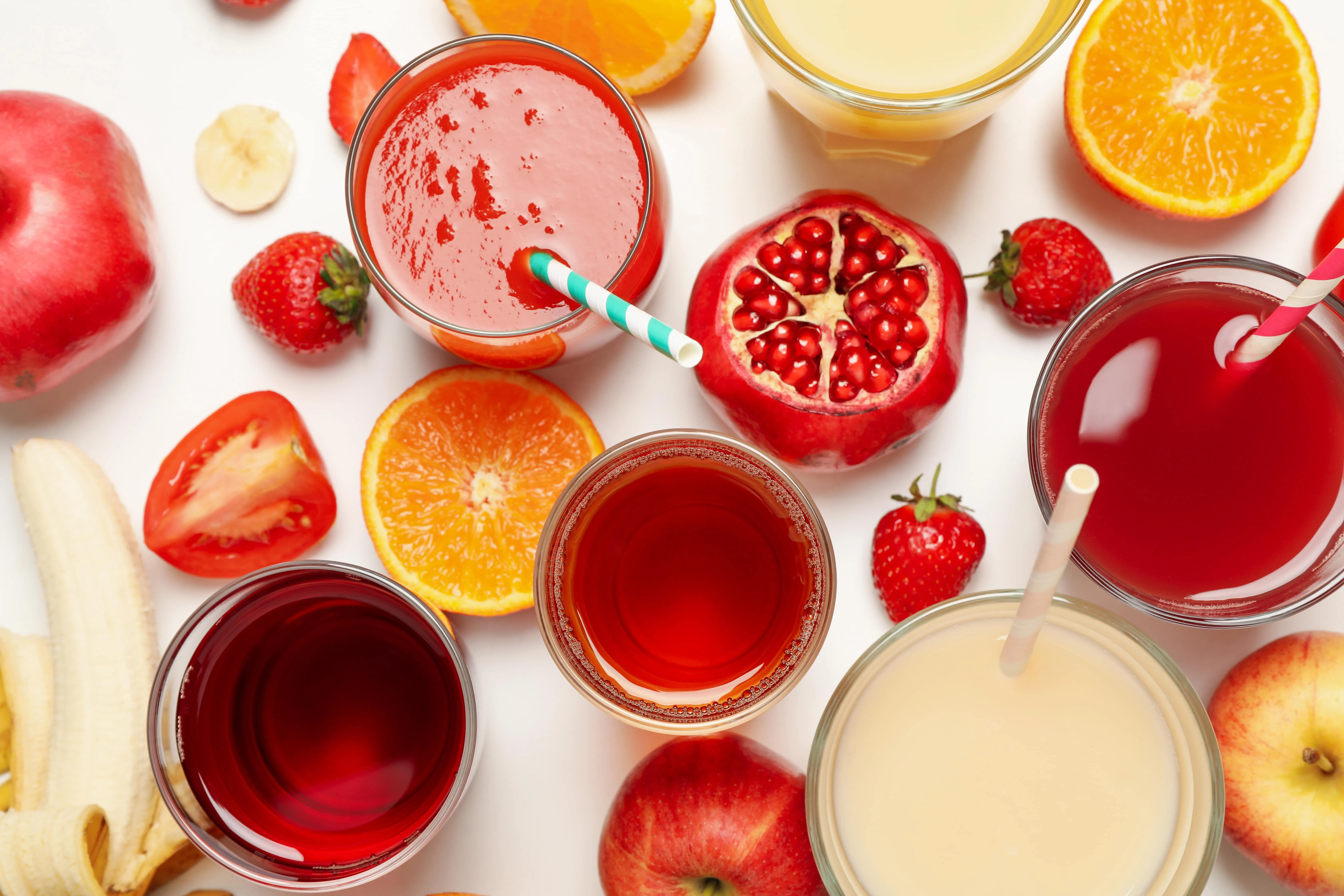Key Takeaways
- Terms like “light,” “refreshing,” and “natural” are often marketing-driven and not always supported by nutritional value or regulatory standards.
- Even regulated claims like “fat-free” or “no added sugar” can be misleading if you don’t consider the serving size and total carbohydrate content.
- Foods labeled “natural” or “made with real fruit” may still contain processed sugars or fruit concentrates that can spike blood sugar.
- “No added sugar” doesn’t mean sugar-free; naturally occurring sugars from fruit and dairy still count toward your total carb load.
- For better blood sugar control, check the Nutrition Facts panel and look for products with lower total carbs, minimal added sugars, and high fiber content.
- Focus on regulated claims that support blood sugar balance, such as high fiber, reduced sugar, and sugar-free options. However, always read the label in full.
{{mid-cta}}
As temperatures rise this summer, you may notice that the products at the grocery store often have new claims like “light,” “refreshing,” and “cooling.” On the surface, these words sound healthier and lower in calories, but is that really true? Often, marketing claims are designed to appeal to consumers' emotions (in this case, weight loss), but the catchy claims don't always equal the end result consumers are looking for.
The mismatch between marketing language and your nutrition goals can lead even savvy shoppers astray. Let's take a look at some of the most common claims you might see on labels, what they really mean, and what you should choose instead.
The Legal Loopholes of Food Labels

Food labeling can be confusing, partly because some terms are strictly regulated while others have no formal definition at all. For example, claims like “organic,” “low-sodium,” or “fat-free” must meet specified guidelines set by the FDA, but terms like “natural” or “refreshing” are less regulated, leaving their meaning up to the manufacturer’s marketing team.1
To avoid being duped at the store, let’s dive into some of the most common claims. And when in doubt, check the nutrition facts and scan the ingredient list to understand what is in each product.
Decoding Misleading Label Claims like“Natural,”“Made with Real Fruit,” and “No Added Sugar”
These inviting descriptors are often just marketing buzzwords that may not have any regulated nutritional meaning. Unlike clearly defined claims like “reduced-fat,” “organic,” or “low-sodium,” terms like “refreshing” aren’t monitored or controlled by the FDA.1 Let’s unpack some common labeling language that could be leading you astray.
What “Light” or “Lite” Really Means
You might assume that products labeled “light” or “lite” automatically mean they’re significantly healthier or lower in calories, but the reality isn’t always that straightforward. Legally, the term “light” has a few definitions.
“Light” labeling on products can refer to a reduction in calories, fat, sodium, color, or even texture. Regardless of the definition, it typically implies a 10% reduction compared to the standard alternative.2
When you lower the calories or fat in a product, many manufacturers add other ingredients to maintain its flavor or texture, so that the product doesn't feel watered down to consumers. Sometimes, this can be confusing, as lightened-up products can contain hidden sources of sugar, carbs, or sodium that may not necessarily align with your health goals.
Plus, the word “light” may have nothing to do with nutrition at all. It could simply refer to the lighter color or thinner texture of the product. To avoid being misled, we recommend flipping to the back of the package and checking the nutrition facts and ingredient list to understand what’s truly inside.
“Natural” Doesn’t Always Mean Healthy
Many shoppers believe a product labeled “natural” is automatically better for them. Still, the FDA does not strictly regulate the use of the term “natural” on food packaging, allowing manufacturers considerable discretion in its use.2
As a result, foods labeled “natural” can still be highly processed, may contain added sugar, or include extra ingredients such as preservatives or flavorings. To truly gauge the nutritional value of a “natural” product, review the ingredients list for wholesome, simple ingredients instead.
“Made With Real Fruit”
The phrase “made with real fruit” conjures images of juicy berries, ripe peaches, or tangy citrus. But in practice, many products that tout this claim may only use small amounts of real fruit. Additionally, they may still use added sugars.
These ingredients might increase a product’s total carbohydrate content, making your “fruit” snack or beverage less nutritious than you’d expect. When checking labels, look for whole fruit listed near the top of the ingredient list, rather than fruit concentrates or syrups, which are typically listed toward the bottom.
“No Added Sugar” Isn’t Necessarily Low in Sugar

A product labeled “no added sugar” might feel like a safe bet when you’re concerned about your blood sugar, but this label claim doesn’t always mean low sugar or low carbohydrate. The total sugar in a product is made up of both added sugar and naturally occurring sugar.
Many items labeled this way, especially those made from fruit, such as fruit-based drinks, smoothies, or yogurts, still contain naturally occurring sugars from the fruit, juice, or milk. Even without added table sugar or syrups, these natural sugars can quickly add up, leading to a rise in blood sugar.
What do “Fat-Free” and “Low-Calorie” mean?
When a food is labeled “fat-free,” it means it contains less than 0.5 grams of fat per serving.2 However, that doesn’t mean it’s completely free of fat, or that it’s automatically healthy. Many fat-free products compensate for the lack of fat by adding extra sugar, starch, or salt to enhance their taste and texture, which can negatively impact their overall nutritional quality.
Plus, depending on the serving size, you could easily accumulate more fat in your diet. For example, spray oil is a great instance of a super small serving size that shows its low-fat and low-calorie content. However, if you spray for longer than a quarter of a second, which is the recommended serving size on the label, you will likely consume more fat.
A “low-calorie” label indicates that the food contains 40 calories or fewer per serving. This can be helpful if you’re watching your calorie intake, but it’s essential to consider the full picture.2 Some low-calorie foods may be low in nutrients or come in very small serving sizes, which can be misleading if you eat more than one serving.
Similar to low-fat labels, low-calorie labels are also dependent on serving size. If the serving size is extra small, it can be easy to overdo it and accumulate more calories than you think.
How These Labels May Raise Blood Sugar
At the end of the day, reading the label and understanding what each claim means helps you be a more informed consumer. When it comes to blood sugar, understanding healthy food claims may not necessarily mean that blood sugar-friendly food claims are important. Always look at the nutrition label, check the serving size, and total carbohydrate to understand how the product will impact your blood sugar.
Here is a quick summary of how each term will affect your blood sugar:
- “Natural”: The term “natural” is not regulated, and the product may still contain added sugars, refined carbohydrates, or processed ingredients that can raise blood sugar levels.
- “Made with Real Fruit”: May also contain fruit concentrates or juices high in natural sugar, which can spike blood sugar levels.
- “No Added Sugar”: May still be high in total carbohydrates and contain naturally occurring sugars from fruit, milk, or juice that impact blood sugar.
- “Light” or “Lite”: Might reduce fat or calories, but can also contain added sugar or starch, which can contribute to blood sugar levels in large amounts.
- “Fat-Free”: Typically, these products replace fat with sugar or carbohydrates to enhance taste, which can result in faster blood sugar spikes.
- “Low-Calorie”: Small servings may still be high in carbs or sugar, and consuming more can add up quickly, potentially impacting blood glucose levels.
What To Look for on Labels Instead

Here are a few claims that are strictly regulated and have clear definitions on nutrition labels.
- Reduced Sugar: This means the product contains at least 25% less sugar than the regular version. However, “reduced” doesn’t mean low; if the original product was very high in sugar, the reduced version may still contain enough to impact blood sugar significantly. Always compare labels if you’re choosing between options.2
- Sugar-Free: Legally defined as containing less than 0.5 grams of sugar per serving, this label can be helpful; however, be cautious of sugar alcohols or artificial sweeteners, which can cause digestive issues or have mixed effects on blood sugar, especially when consumed in large amounts.2
- High Fiber: This label means the product contains 5 grams or more of fiber per serving. Fiber helps slow the absorption of carbohydrates and can blunt blood sugar spikes. Choosing high-fiber foods is one of the most effective label-based strategies for supporting blood sugar control.2
- Low Calorie: A product labeled low calorie has 40 calories or fewer per serving. While lower-calorie items may aid in weight management, they can still be high in carbohydrates or sugar substitutes, so checking the total carbohydrate content is crucial for maintaining blood sugar awareness.2
- Low Fat: Defined as 3 grams of fat or less per serving, this label often leads consumers to believe the food is healthier. However, many low-fat products compensate for reduced fat by adding sugars or refined starches to enhance flavor, which can quickly spike blood sugar levels.2
- Low Sodium: This means 140 milligrams of sodium or less per serving. It’s helpful for heart and blood pressure health, but doesn’t impact sugar or carb content. Low-sodium options can still be high in carbohydrates or hidden sugars, so read the full label when blood sugar control is a priority.2
- No Sugar Added: This indicates no sugars were added during processing, but it doesn’t mean the product is sugar-free. Foods like fruit-based drinks, smoothies, or yogurts may still contain high levels of natural sugars, which can raise blood sugar even without added sweeteners. Always check the total carbohydrates for a comprehensive understanding of the product’s likely effect on your blood sugar.
The Bottom Line
Remember, food, snacks, and beverage labels may sound healthier than they truly are, using buzzwords like “light,” “refreshing,” and “natural” without proper definitions. Even regulated labels can be confusing if you don’t look beyond the front of the package. To truly understand how a food might impact your blood sugar, look directly at the Nutrition Facts panel. Focus on total carbohydrates, added sugars, serving size, and fiber, especially fiber, which can help slow down blood sugar spikes. These numbers give you a far clearer picture than any buzzword ever could.
Learn More With Signos’ Expert Advice
Understanding how food labels affect your blood sugar is just the beginning. Signos takes the guesswork out of nutrition by showing you how your body responds to every single food choice you make, so you can make smarter choices and feel your best. Explore more expert tips on glucose management over on the Signos blog.
Topics discussed in this article:
References
- Food Packaging Claims. American Heart Association. Accessed July 7, 2025.
- A Food Labeling Guide. FDA. Accessed July 7, 2025.



.webp)
.svg)










.svg)
.svg)
.svg)
.svg)
.svg)
.svg)
.svg)
